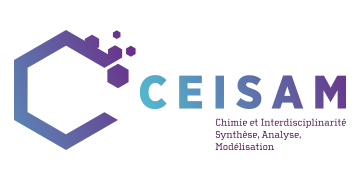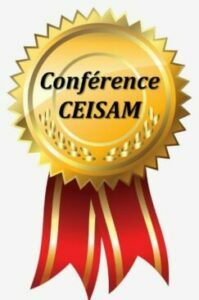On Friday 13th of September at 3pm in Marie Curie’s room, Prof. Jon Marangos from Imperial College London will give a seminar at CEISAM entitled « Ultrafast electronic dynamics and electron-nuclear couplage via linear and non-linear x-ray probing ».
Jon Marangos has a Professor Chair in Physics at Imperial College London and is the Director of the Blackett Laboratory Laser Consortium. One of his major areas of research activity is the development of experimental methods for the measurement of processes on the attosecond time-scales, a discipline recently honored by the Nobel Academy (2023 Nobel Prize in Physics). He has been awarded an ERC Advanced Grant on « Attosecond Science by Transmission and Emission of X-rays (ASTEX) » (2012-2017).
The title of his presentation (which will be given in English) is: « Ultrafast electronic dynamics and electron-nuclear coupling via linear and non-linear x-ray probing ».
Bio
Jon Marangos graduated with a BSc in Physics from Imperial College in 1982 where he remained for his PhD completed in 1986.
In 1990 he was appointed an EPSRC Advanced Fellow during which time he was a Visiting Researcher at NIST, Gaithersburg USA and a Visiting Professor at the University of Tokyo. He was appointed a Lecturer in Physics at Imperial in 1995 and a Reader in 1999. In 2002 he was made Professor of Laser Physics and subsequently appointed to the Lockyer Chair in Physics. Currently he is the Director of the Blackett Laboratory Laser Consortium having served as the Head of the Quantum Optics and Laser Science Group from 2003-2008. He is the Principal Investigator of the EPSRC Programme Grant « Attosecond Electron Dynamics in Molecular and Condensed Phase Matter » (starting 2011) and has been awarded an ERC Advanced Grant on « Attosecond Science by Transmission and Emission of X-rays (ASTEX) » (starting 2012).
His major areas of research activity are in: (1) development of experimental methods for the measurement of processes on the attosecond time-scales; (2) non-linear optical processess for generation of coherent soft X-ray and VUV radiation and applications of these sources in atomic, molecular and muon physics; (3) High intensity laser- matter interactions especially looking at interactions with molecules and clusters; (4) investigation of atomic and molecular coherence effects (e.g. EIT) and enhanced non-linear frequency mixing. Recently he has been looking at the problems of controlling the electron dynamics driven in complex systems by strong laser fields and in developing high power sub-femtosecond light sources. He is involved in free electron laser science having led the UK New Light Source Project from 2008-2010 and is an active participant in experiments at LCLS, SLAC, USA and FLASH, DESY, Hamburg. He is a Fellow of the Optical Society of America and the Institute of Physics.
Abstract
Jon Marangos, Imperial College London The talk will cover recent research in our group and in our collaborations at the FLASH and LCLS XFELs on: (i) Time resolved x-ray spectroscopy of exciton dynamics in organic photovoltaic materials. (ii) Tracking electron-nuclear coupling in a molecule undergoing charge migration via x-ray pump-probe spectroscopy. (iii) Attosecond XFEL pulses applied to impulsive x-ray stimulated Raman in liquid water – a new non-linear x-ray tool for attosecond science. (iv) The impulsive response of molecules to an x-ray excitation: Attosecond pump-probe x-ray measurements.
At the end I will give a brief overview of the UK XFEL Conceptual Design and Options Analysis project.

